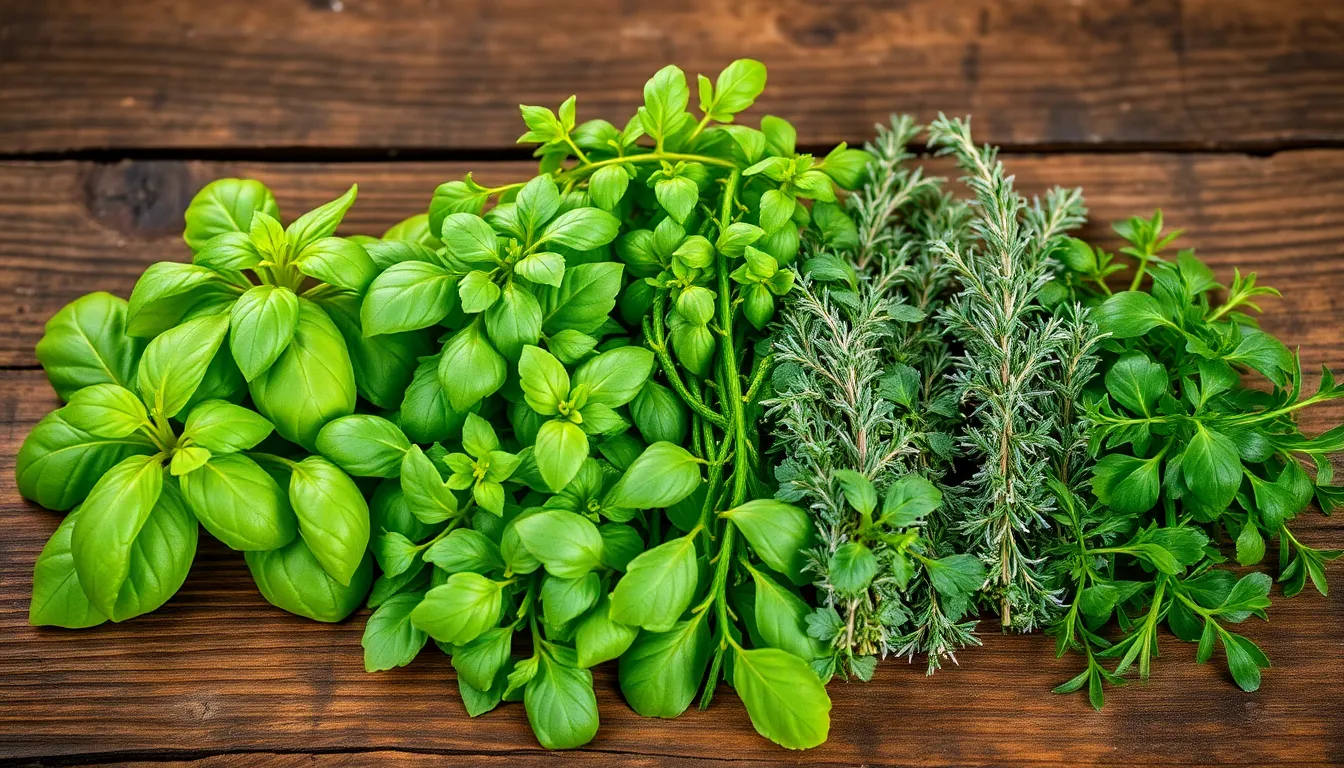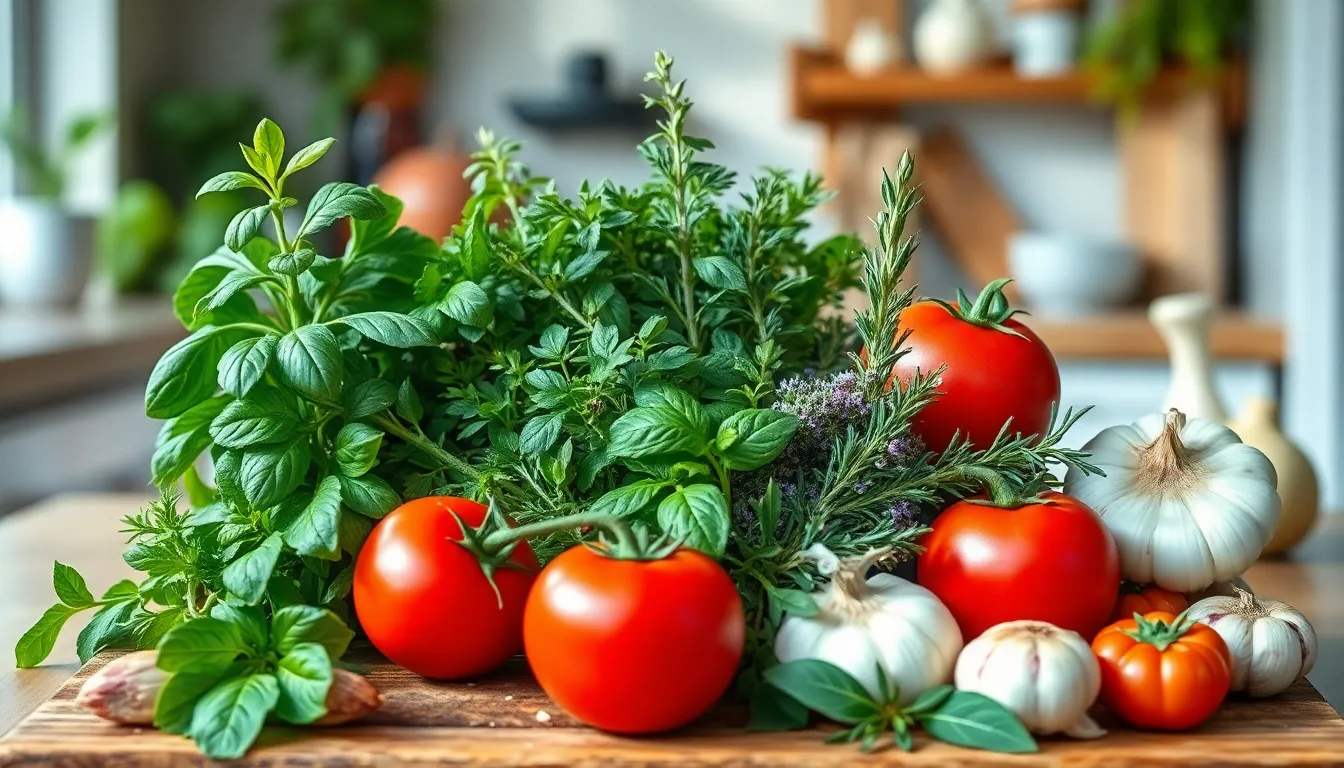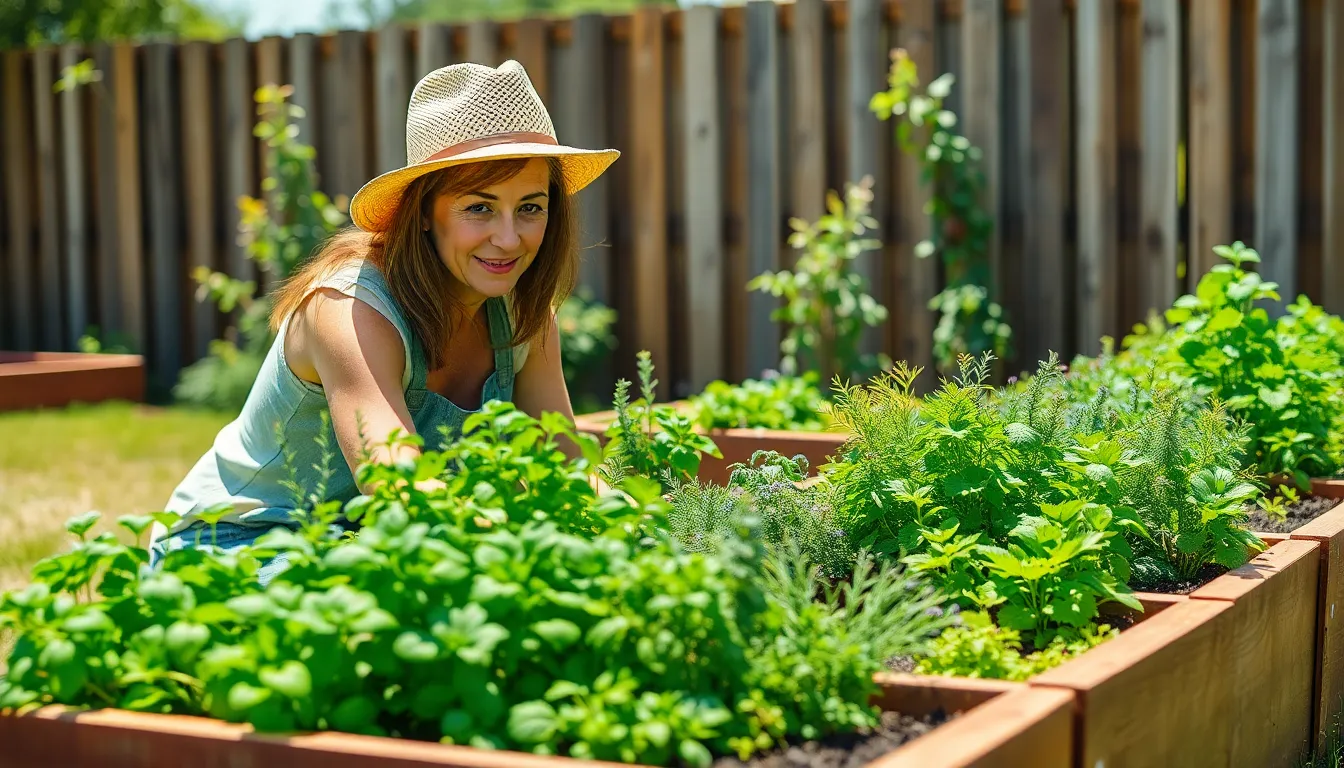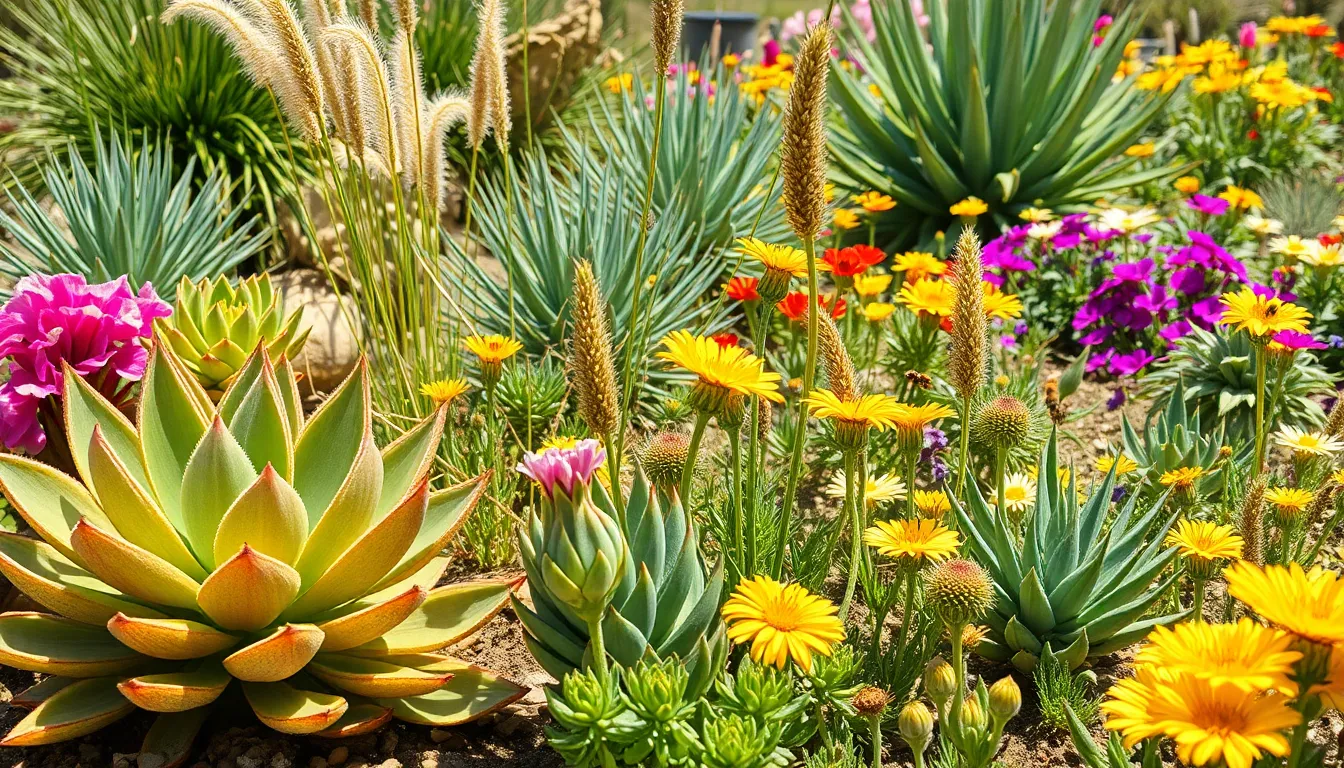Culinary herbs are the unsung heroes of the kitchen, transforming ordinary dishes into extraordinary culinary experiences. From the fragrant basil that elevates a classic pesto to the vibrant cilantro that adds freshness to tacos, these herbs play a vital role in enhancing flavors. Their versatility goes beyond taste; they also bring a wealth of health benefits, making them essential for any home cook.
In an age where home cooking is on the rise, understanding the various types of culinary herbs and how to use them can elevate meals to new heights. Whether it’s learning to grow them in a backyard garden or discovering how to incorporate them into everyday recipes, the world of culinary herbs is rich and rewarding. Dive into the aromatic journey of these green treasures and unlock the secrets they hold for delicious, healthful cooking.
Table of Contents
ToggleOverview of Culinary Herbs
Culinary herbs serve as essential ingredients in cooking, adding depth and character to a wide range of dishes. These aromatic plants enhance flavors, providing freshness and complexity that elevate meals. Common examples of culinary herbs include basil, cilantro, parsley, dill, and thyme.
Culinary herbs vary in flavor profiles. Basil brings sweet and peppery notes, often used in Mediterranean cuisine. Cilantro offers a citrus-like taste, prevalent in Latin American and Asian dishes. Parsley adds a mild, earthy flavor, suitable for garnishing and seasoning. Dill imparts a distinct, tangy zest, frequently found in pickling and seafood recipes. Thyme provides a warm, slightly minty taste, ideal for roasted dishes and stews.
Health benefits accompany these herbs. Many culinary herbs exhibit antioxidant properties, supporting overall well-being. For instance, oregano contains compounds linked to anti-inflammatory effects, while rosemary has been studied for its potential cognitive health benefits. Incorporating these herbs into meals adds flavor and promotes healthier eating habits.
Growing culinary herbs at home remains accessible. Herbs flourish in pots on windowsills, gardens, or balconies. They require minimal care, thriving with adequate sunlight and regular watering. Fresh herbs significantly enhance the taste of dishes, reinforcing the connection between gardening and culinary enjoyment.
Using culinary herbs in everyday recipes promotes variety and creativity. They can be used in sauces, marinades, salads, and soups. Experimenting with different herbs can lead to exciting flavor combinations, making meals more enjoyable. Culinary herbs transform ordinary cooking into an adventurous and flavorful experience.
Common Culinary Herbs


Culinary herbs play a vital role in flavor enhancement and health benefits. Here’s a closer look at some of the most common culinary herbs and their unique attributes.
Basil
Basil offers a sweet, peppery flavor that complements various dishes, particularly Italian cuisine. It thrives in warm climates and prefers full sunlight. Varieties include Sweet Basil and Thai Basil, each bringing distinct tastes to recipes. Basil contains essential oils known for their antioxidant and anti-inflammatory properties, promoting overall health.
Oregano
Oregano features a robust, slightly bitter flavor, making it essential in Mediterranean and Mexican dishes. Common varieties include Greek Oregano and Mediterranean Oregano. This herb thrives in well-drained soil and full sun exposure. Oregano is rich in antioxidants and has antimicrobial properties, enhancing not only flavor but also nutritional value.
Thyme
Thyme provides an earthy, mint-like flavor that enhances soups, stews, and roasted meats. With common varieties like English Thyme and Lemon Thyme, it adapts well to various climates and soil types. Thyme is known for its antiseptic properties and is used in traditional medicine for respiratory issues. This adaptable herb thrives in full sun and well-drained soil.
Rosemary
Rosemary features a strong, pine-like flavor that pairs well with roasted dishes and marinades. This hardy herb grows well in dry, sandy soil and thrives in full sunlight. Varieties include Tuscan Blue and Prostratus, each imparting a unique taste to culinary creations. Rosemary contains antioxidants and compounds that may improve digestion and enhance cognitive function.
Culinary Uses of Herbs
Culinary herbs play a crucial role in elevating dishes through flavor enhancements and food preservation. Their applications in cooking offer a wide range of benefits, making them indispensable in the kitchen.
Flavor Enhancements
Flavor enhancements from culinary herbs significantly transform dishes, adding depth and complexity. Basil complements tomatoes in sauces and salads, creating a balanced profile. Cilantro brightens salsas and Asian dishes with its fresh notes. Parsley serves as both a garnish and flavor booster for soups and stews, while dill enhances the taste of fish and pickles. Thyme’s earthy flavor enriches roasted meats and vegetable dishes, with its aromatic qualities making it a favorite in various cuisines. Each herb offers unique flavor compounds that enhance not only taste but also the overall dining experience.
Preserving Food
Preserving food with culinary herbs extends shelf life and adds flavor. Herbs like oregano and rosemary possess antimicrobial properties, which inhibit bacterial growth. Incorporating these herbs into marinades and brines helps prolong freshness in meats and vegetables. Dill is often used in pickling processes, imparting a distinctive taste to preserved cucumbers and other vegetables. Additionally, using herb-infused oils or vinegars can enhance food preservation while providing robust flavor. This makes culinary herbs valuable for both enhancing taste and ensuring food longevity.
Health Benefits of Culinary Herbs
Culinary herbs offer numerous health benefits that contribute to overall well-being. They provide essential nutrients and possess unique medicinal properties that support various functions in the body.
Nutritional Value
Culinary herbs are rich in vitamins, minerals, and antioxidants.
- Basil contains vitamin K, manganese, and magnesium.
- Cilantro is high in vitamins A, C, and K, alongside calcium and potassium.
- Parsley supplies vitamin C, vitamin K, and folate.
- Dill offers calcium, manganese, and antioxidants like quercetin.
- Thyme contains vitamins C and A, along with iron and manganese.
Including these herbs in meals boosts nutritional intake, promoting a balanced diet. Their low-calorie nature makes them ideal for flavoring dishes without adding extra calories.
Medicinal Properties
Culinary herbs possess medicinal properties that provide therapeutic benefits.
- Basil acts as an anti-inflammatory and may support mental health.
- Oregano is known for its antimicrobial and antioxidant effects, aiding digestion.
- Thyme showcases antibacterial properties and may help respiratory health.
- Rosemary enhances circulation and cognitive function while offering anti-inflammatory benefits.
- Cilantro has been linked to detoxification and reducing heavy metal toxicity.
Integrating these herbs into daily meals not only enriches flavors but also promotes health through their various medicinal attributes.
Growing Culinary Herbs at Home
Growing culinary herbs at home offers fresh flavors and enhances culinary skills. Whether cultivating indoors or outdoors, these herbs thrive in various environments.
Indoor Herb Gardens
Indoor herb gardens provide a convenient option for home cooks. They require minimal space and can flourish in windowsills or small containers.
- Lighting: Place herbs where they receive at least 6 hours of bright, indirect sunlight. Grow lights can supplement when natural light is insufficient.
- Containers: Use pots with drainage holes to avoid waterlogging. Ensure the size accommodates root growth; 6 to 12 inches in diameter is adequate for most herbs.
- Soil: Select a well-draining potting mix formulated for herbs. Amending with perlite or sand enhances drainage.
- Watering: Water when the top inch of soil feels dry. Herbs typically prefer slightly moist soil without being soggy.
- Temperature: Maintain a temperature between 65°F and 70°F. Avoid placing herbs near drafts or heating vents.
Common herbs for indoor gardens include basil, parsley, and chives. Their availability throughout the year supports continuous use in recipes.
Outdoor Herb Gardens
Outdoor herb gardens offer ample space for a diverse range of herbs. They thrive in sunlight and natural conditions.
- Location: Choose a sunny spot with at least 6 to 8 hours of direct sunlight. Ensure the area has good air circulation to prevent disease.
- Soil: Test soil pH, aiming for a range of 6.0 to 7.0. Enrich the soil with compost to improve fertility and drainage.
- Spacing: Space herbs according to their growth habits. For instance, plant basil 12 inches apart and keep dill about 18 inches apart to allow for adequate airflow.
- Watering: Water deeply and infrequently to encourage deep root systems. Regular checks for moisture levels are essential, especially during dry spells.
- Maintenance: Regularly prune and harvest herbs to promote growth and prevent flowering. This ensures sustained flavor in culinary applications.
Popular outdoor herbs include rosemary, mint, and thyme. Such herbs contribute significantly to flavor profiles in various dishes while being easy to cultivate with proper care.




